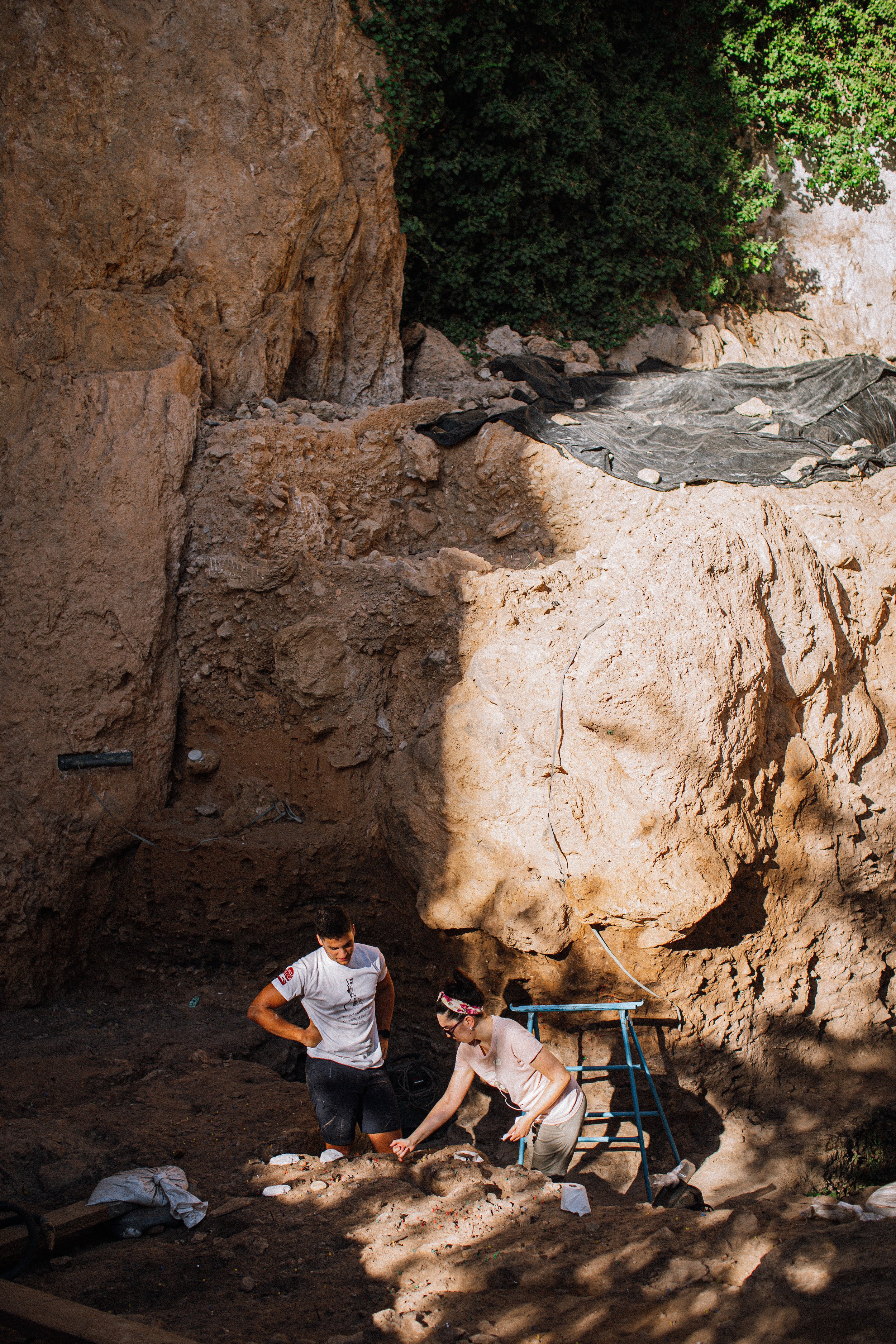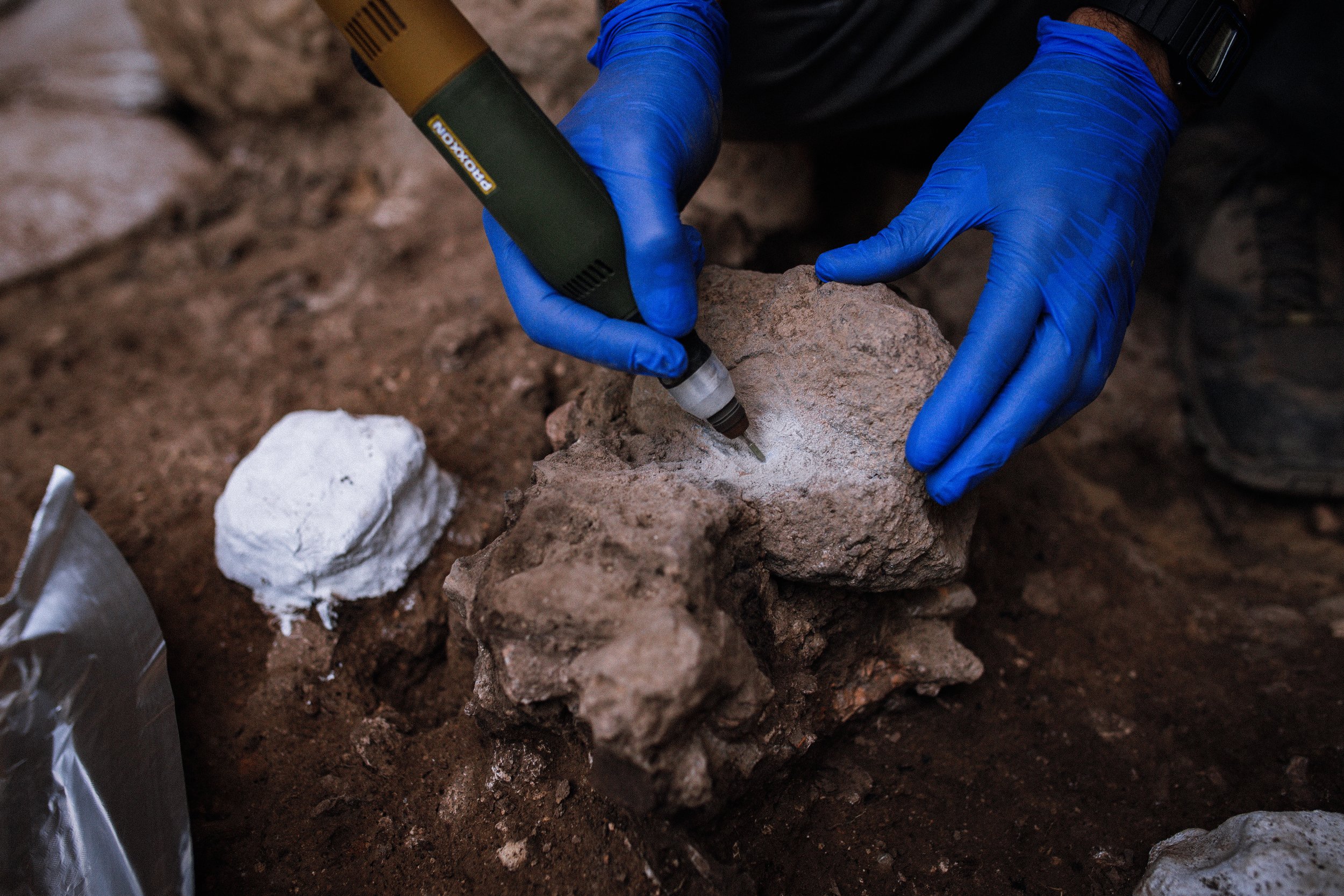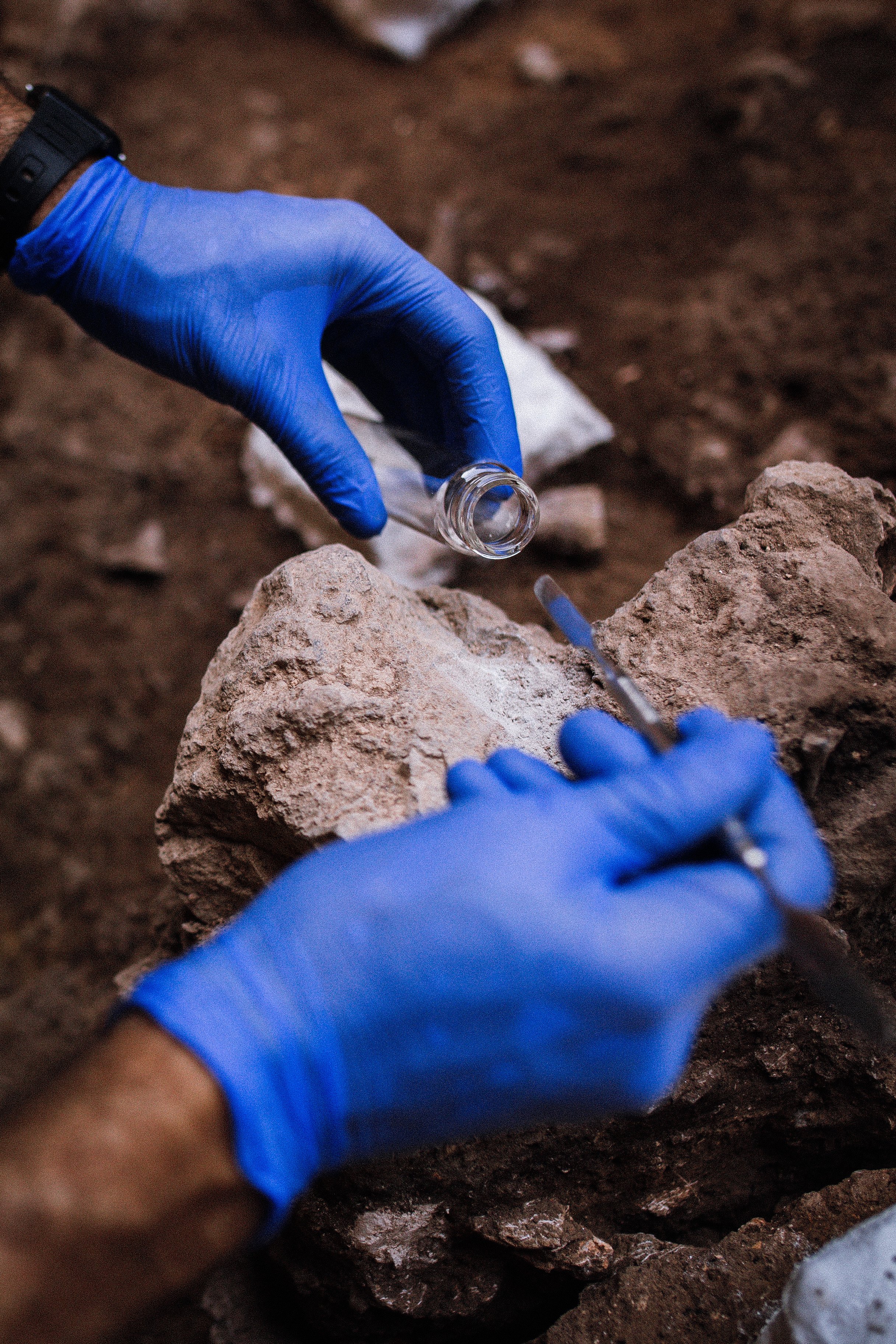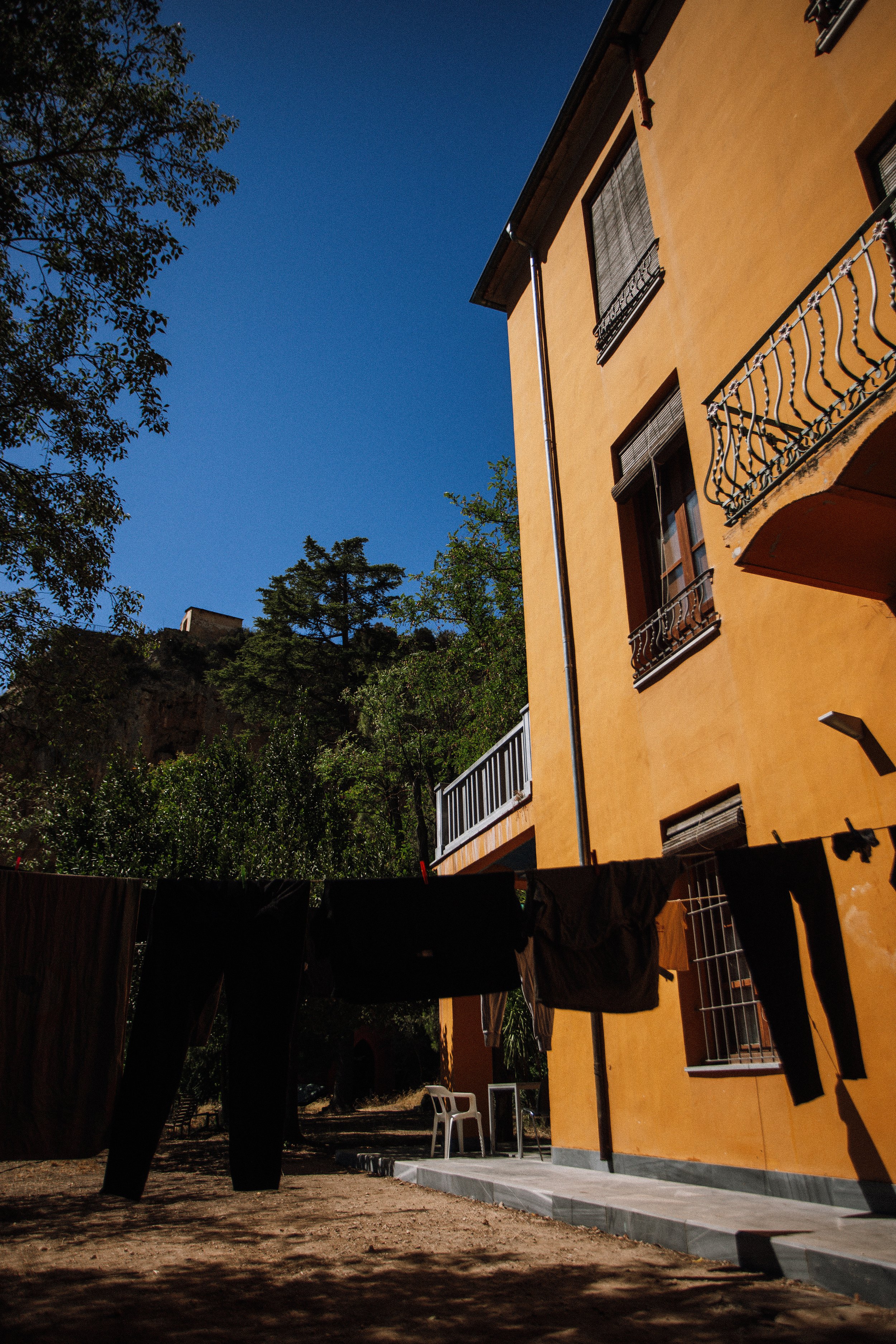
El Salt Excavations: 2023 Field Season
Words by Ryan Lucas Henderson, Cristo Hernández, Javier Davara, Dimitri Papavasiliou, Ada Dinçkal, Sarah Pederzani, Ángela Herrejon, and Sven Kleinhapl.
August 2023
El Salt is a Middle Paleolithic site located in Alcoy, Spain that hosted myriad Neanderthal activities approximately 60,000 to 40,000 years ago. In 1986, Professor Bertila Galván of the University of La Laguna initiated an international research project of the area that is ongoing to this day.
During the summer of 2023, I documented the research team’s excavations and associated activities.
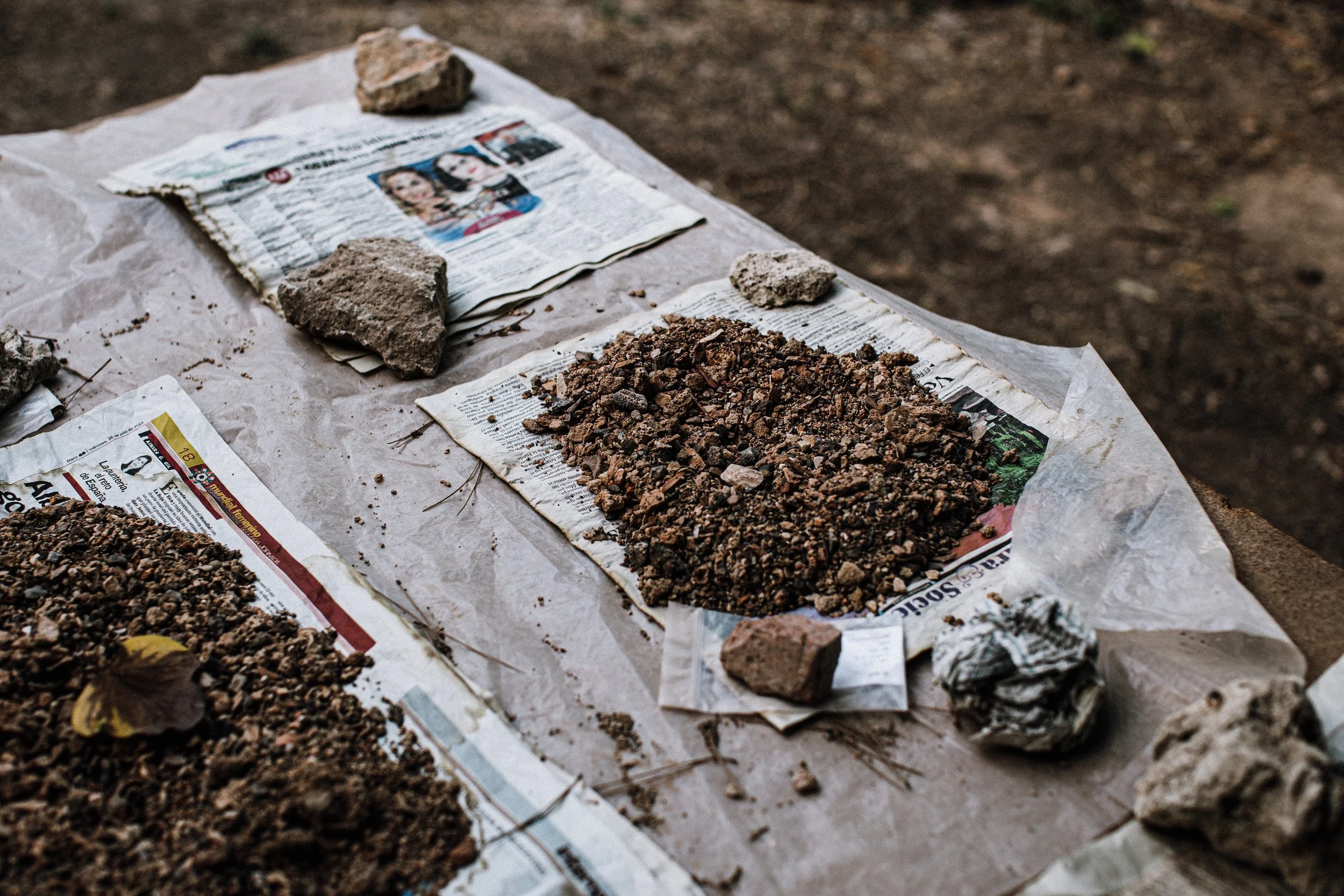
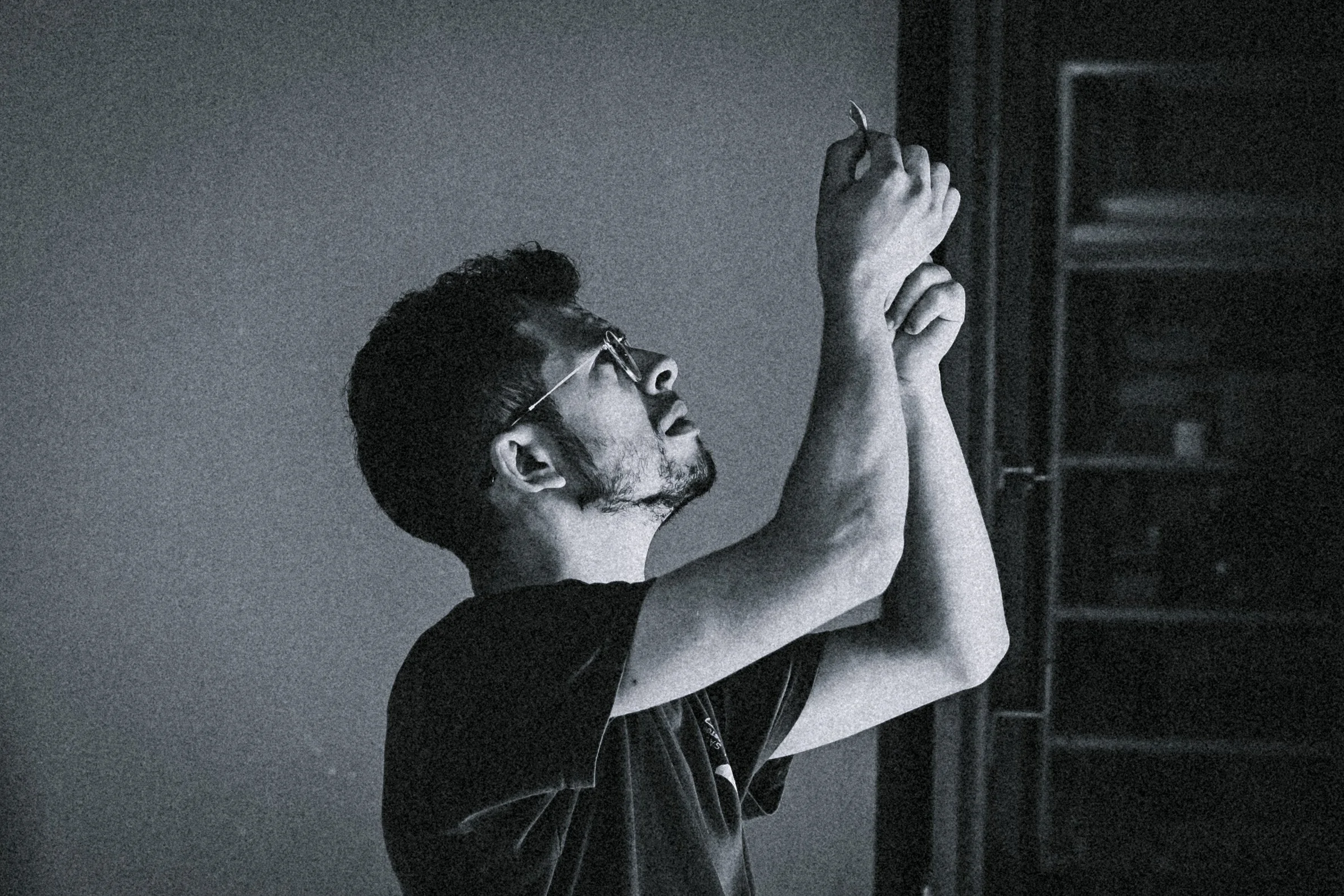
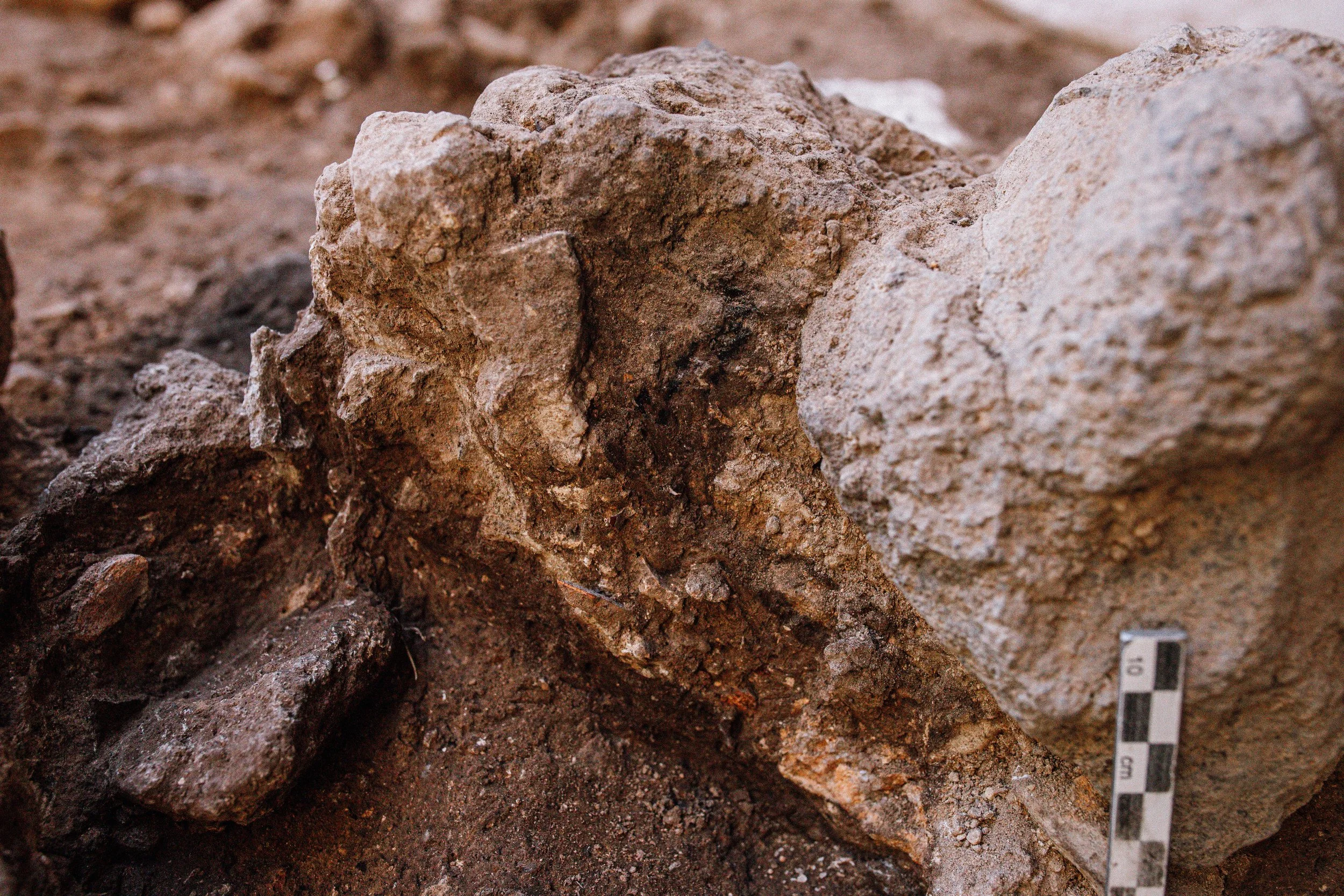
(right) Professor Cristo Hernández of the University of La Laguna sits among the excavation site of El Salt.
Cristo is the site coordinator, together with Carolina Mallol. When I asked him about the excavation, here’s what he had to say:
“When one finds oneself in El Salt, it is not difficult to imagine that the Neanderthal hunter-gatherer populations found multiple reasons to settle in this extraordinary place. This site, located at the headwaters of the Serpis, a river that flows from the mountains of the north of Alicante to the beach of Gandía on the Mediterranean coast, is a unique place in the shadow of an amazing travertine formation.
Its sedimentary deposit documents a crucial period in the life of these human groups, the last 20,000 years of their existence, 60,000 to 40,000 years before today.
Additionally, thanks to the excellent preservation of its macroscopic, microscopic, and molecular archaeological record and the development of an international and interdisciplinary research project, it has become an open window to learn more about who they were, how they lived, and what became of these hominids.”
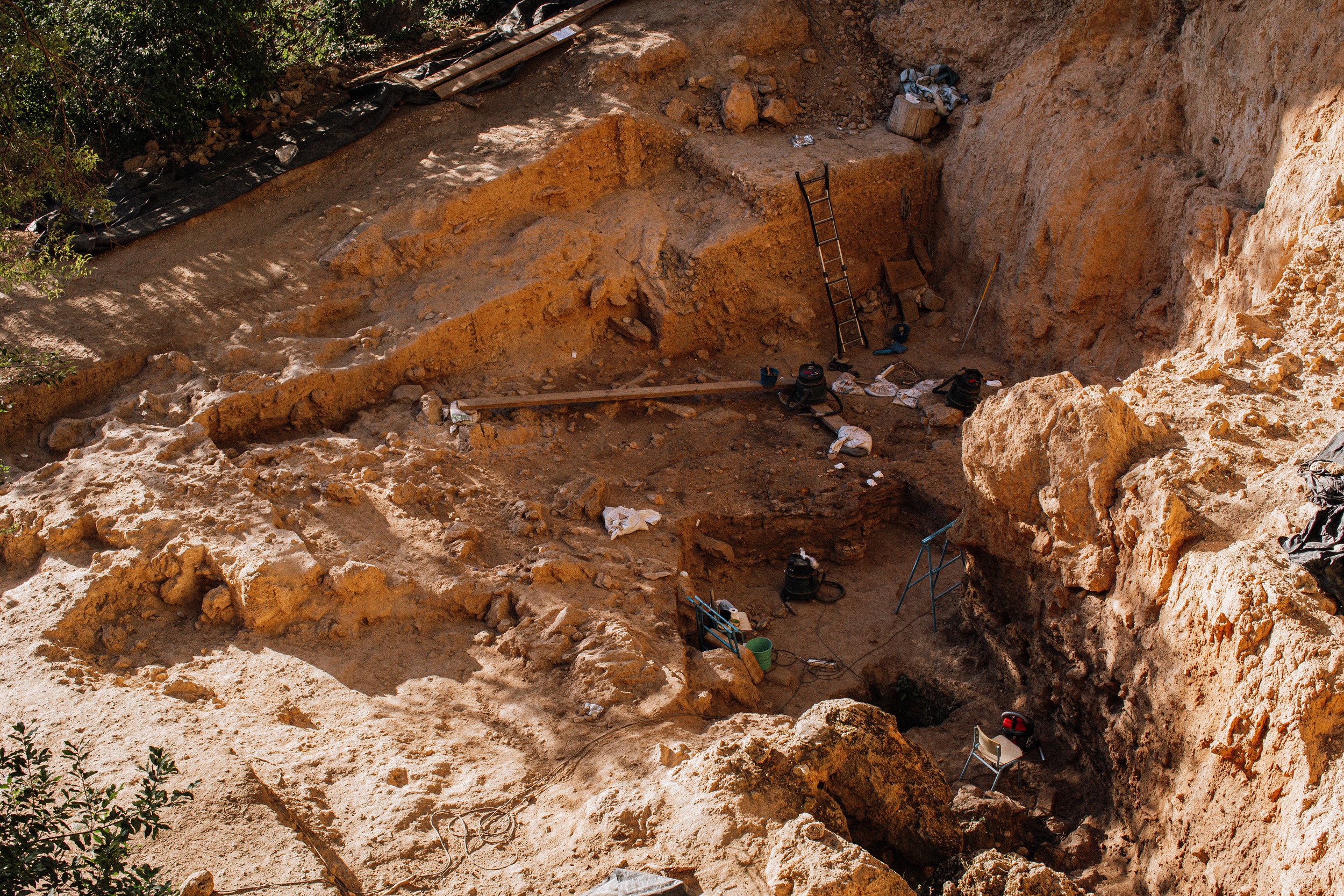
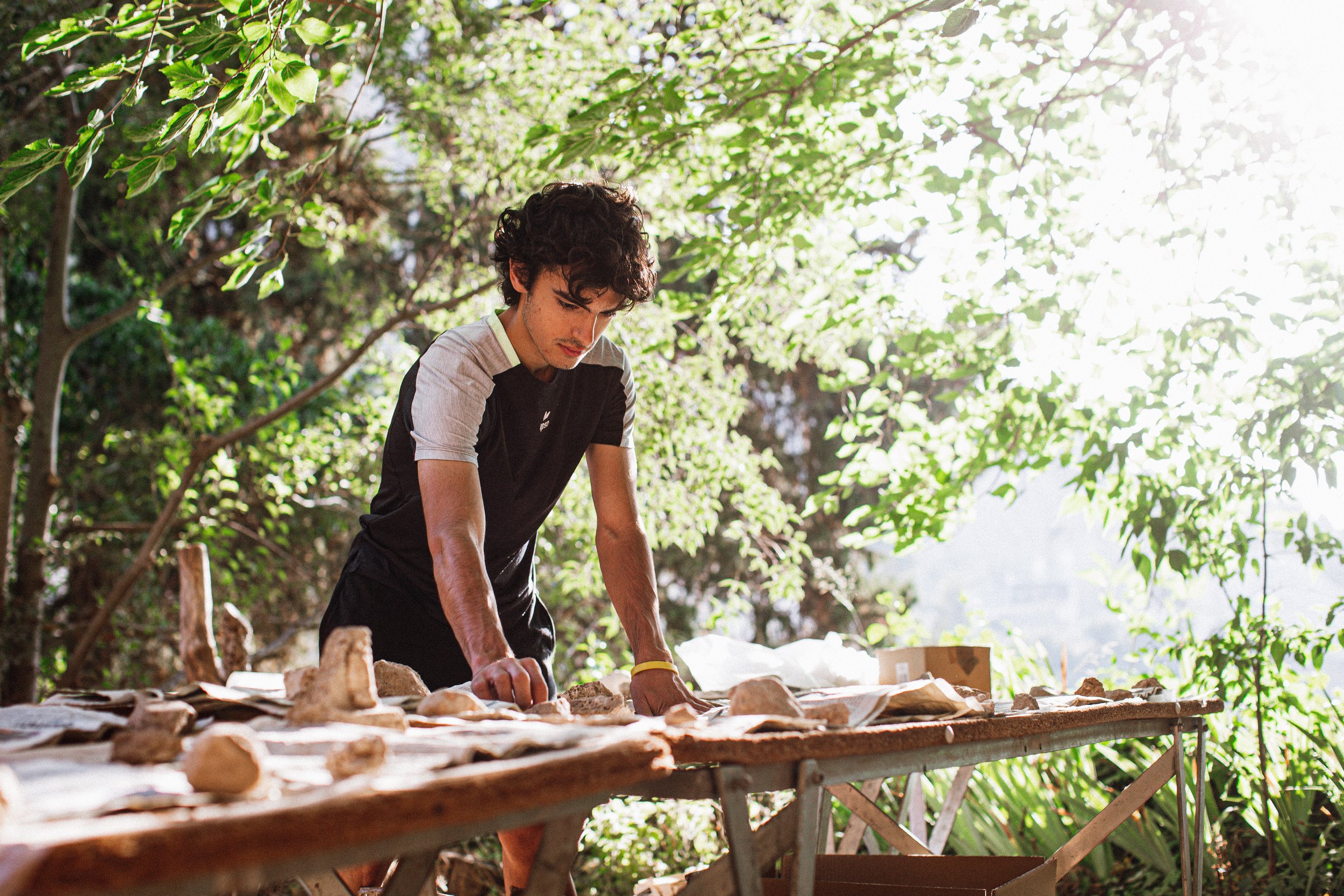
To date, six Neanderthal teeth have been discovered at El Salt, in addition to the many hand tools, hearths, and other remains of Neanderthal lifeways.
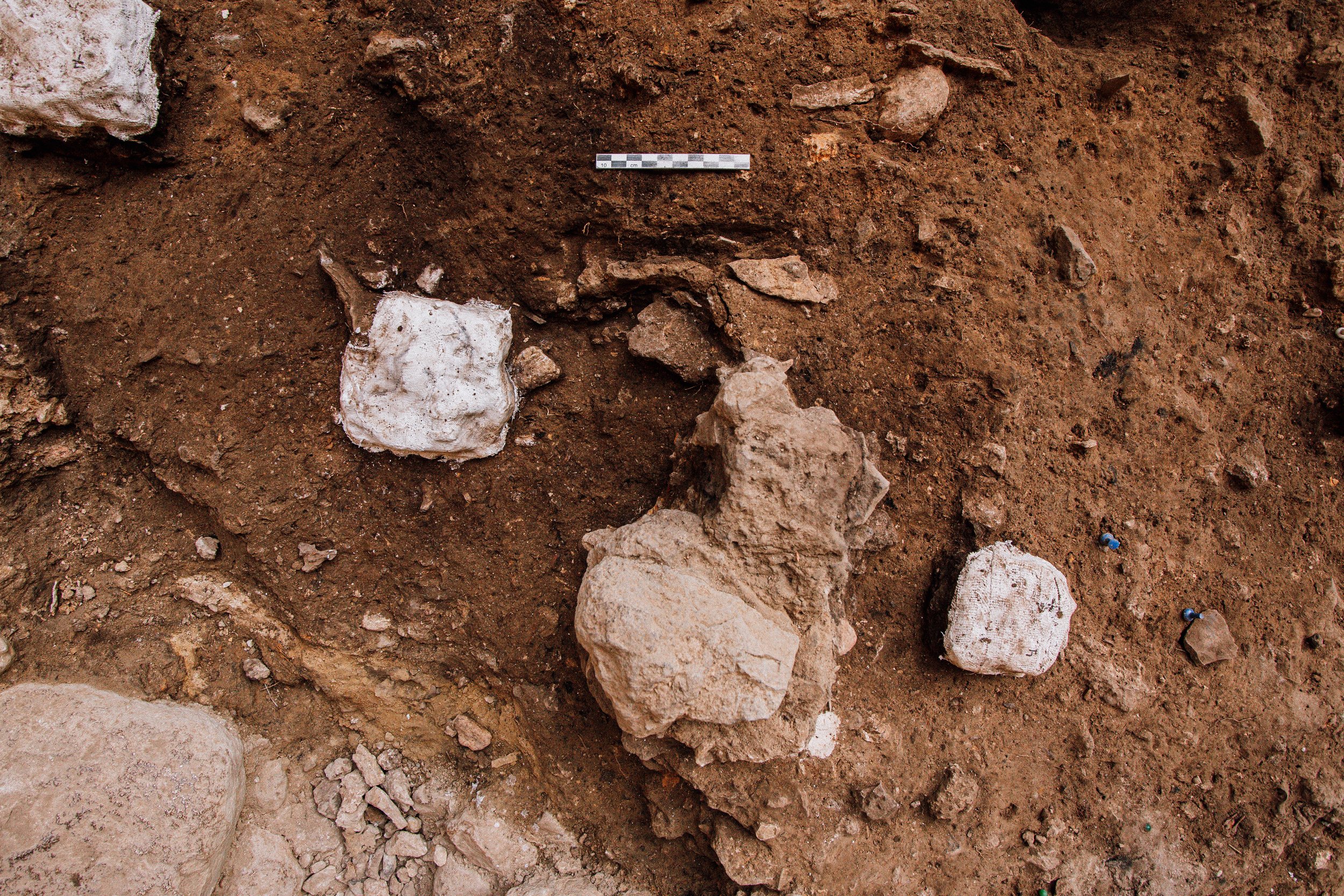
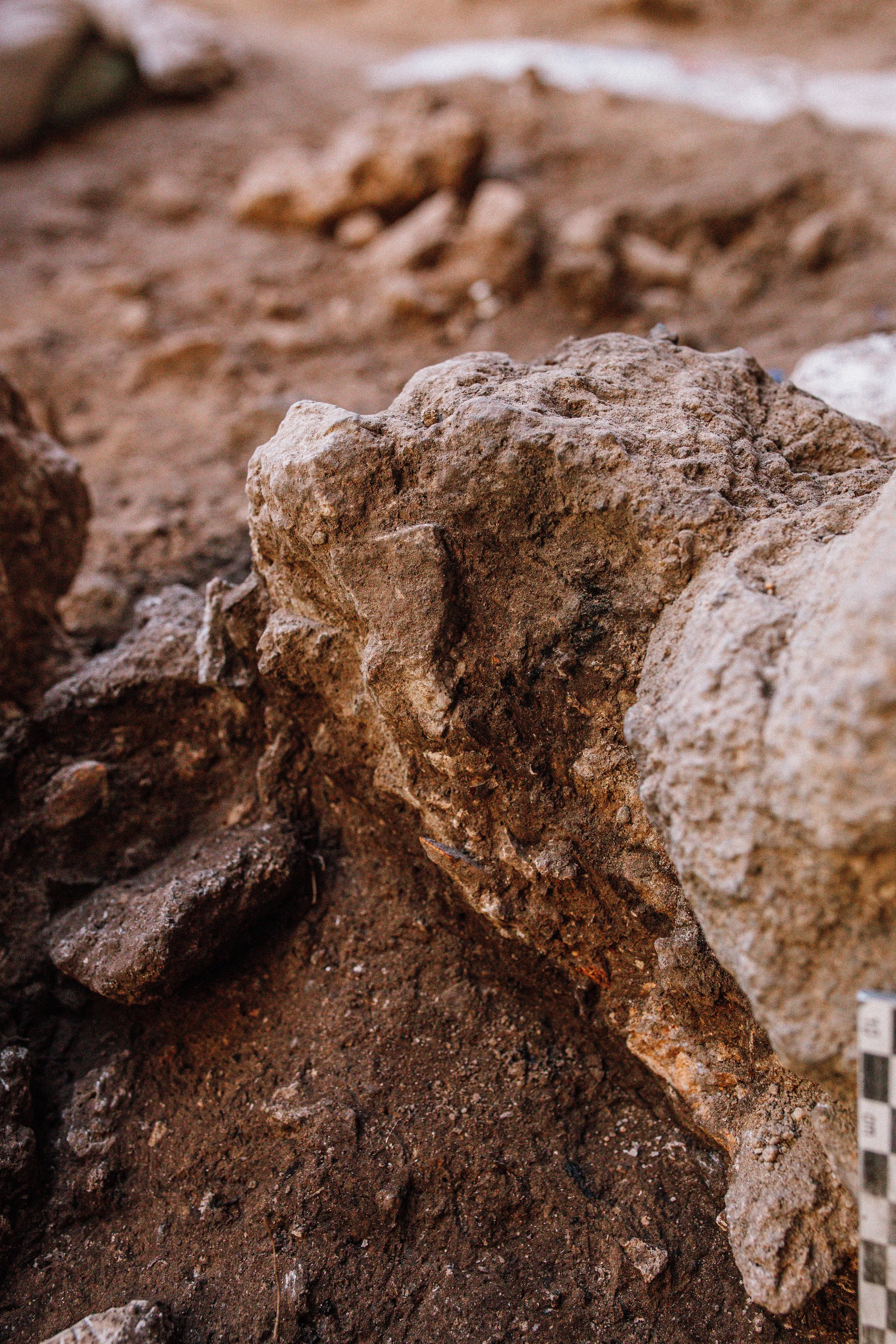
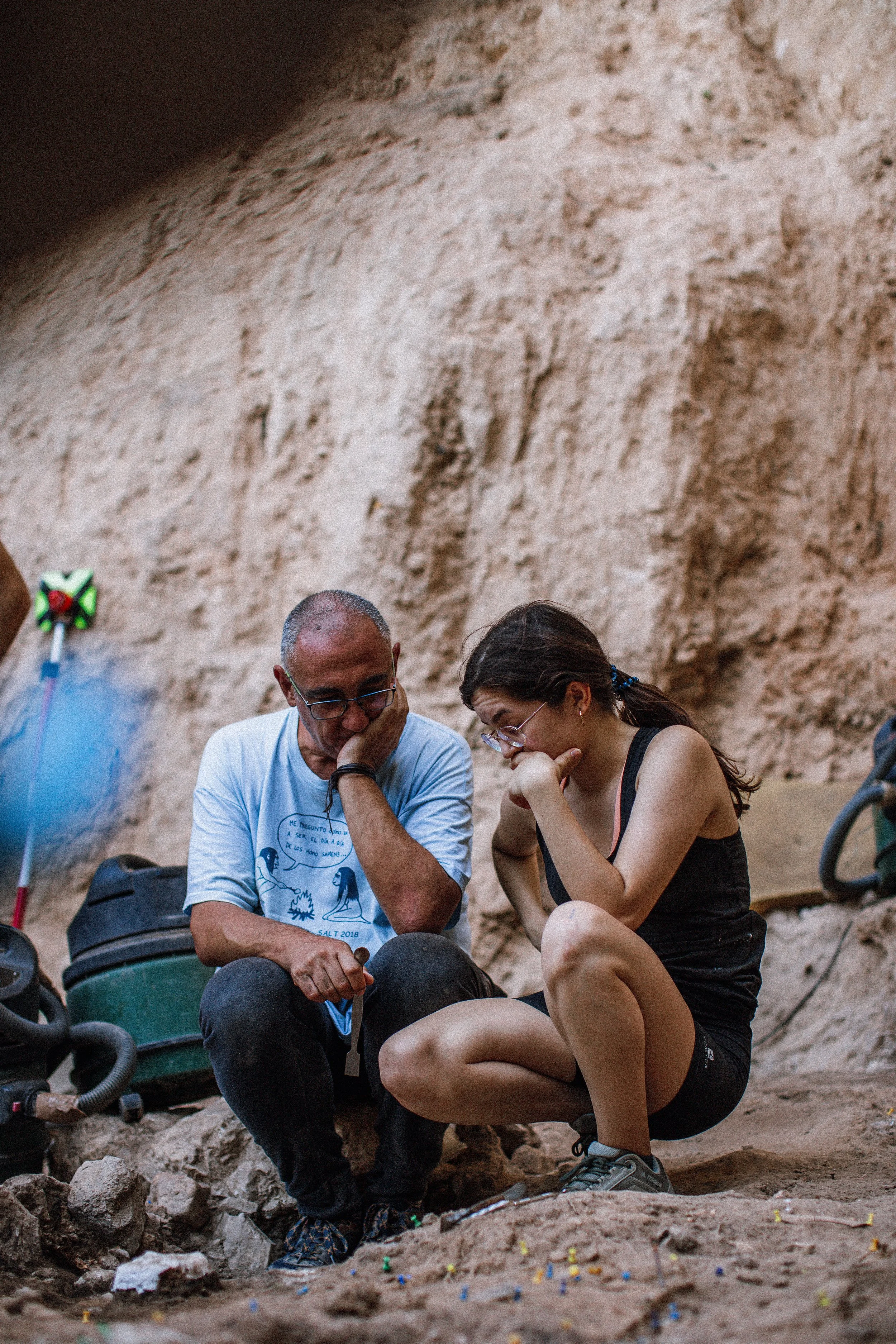
(above) Cristo Hernández and Laura Tomé, a PhD candidate at the University of La Laguna, examine a puzzling aspect of a hearth, one of the more significant hearths in a larger combustion area of overlapping hearths and evidences of pyro-activity.
(below) Dimitri Papavasiliou, a PhD candidate at Rutgers University, and Javier Davara, a PhD candidate at the University of La Laguna, collect samples from a piece of a hearth to submit for various types of chemical analyses.
Javier specializes in organic residue analysis. That means he focuses on the molecular aspect of sites, specifically looking at lipids, known in the field of study as “chemical fossils.”
Archaeologists who study lipids are able to determine what organic materials were brought back to a site, how they were used, and how the environment around the site changed over time.
When looking at a group of hunter-gatherers, that information can say a lot.

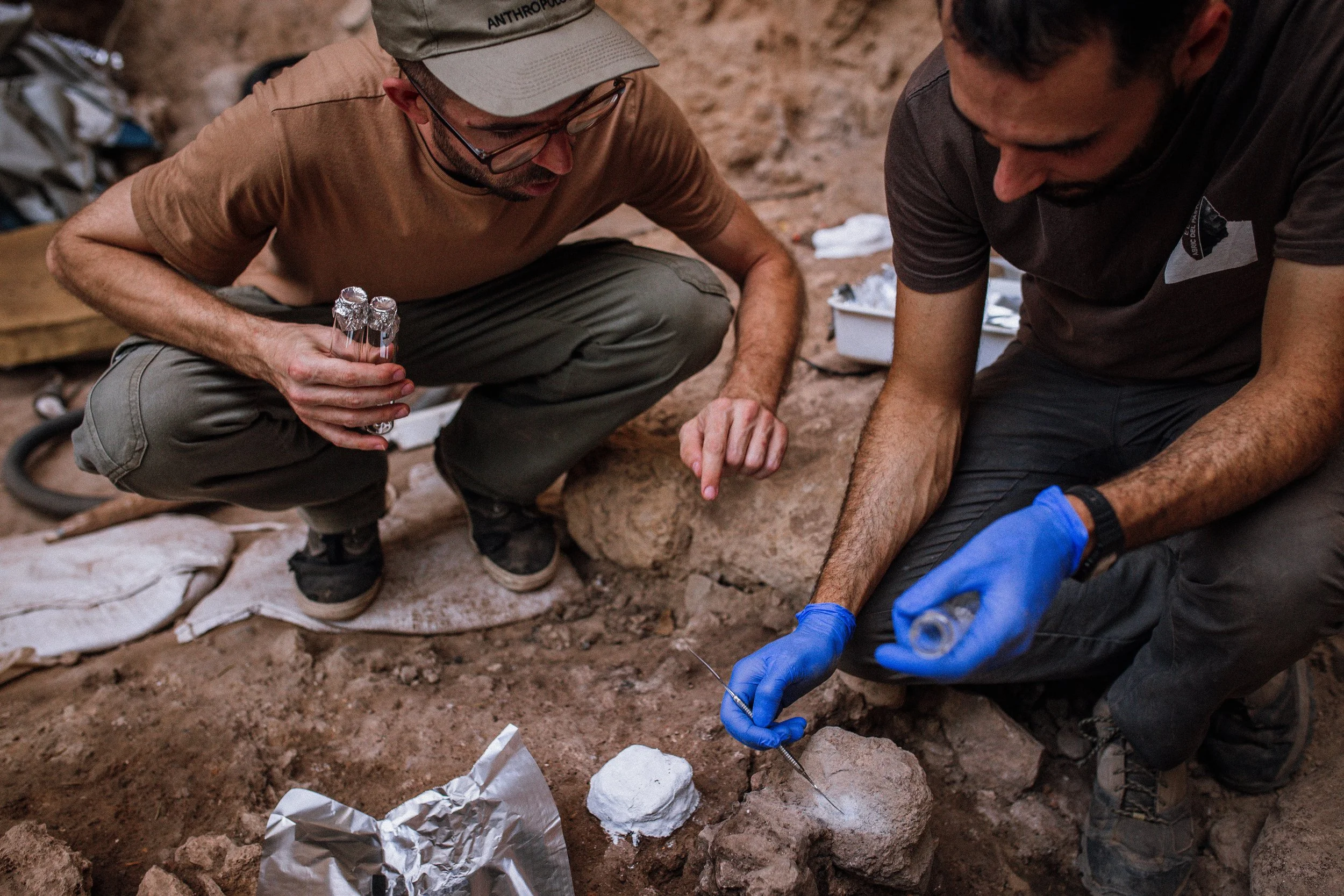
One of Javier’s primary subjects of focus at El Salt this year is the excavation of a combustion area composed of different types of hearths, seen and mentioned in the photos above.
Javier and his colleagues have a main question they wants to answer: What sets of activities gave rise to the accumulation and formation of these combustion structures?
If they can answer this question, it will further elucidate Neanderthal behavior and fire technology being used around 50,000 years ago.

(left, and pictured alongside Javier Davara above) Dimitri Papavasiliou is approaching the previously mentioned combustion area from a slightly different angle than his colleagues.
Dimitri specializes in archaeobotany through a microarchaeological approach, exploring phytoliths within archaeological sites.
In his words, here’s what that means:
“Phytoliths are silica fossils formed within plant cells and preserve in the archaeological record to reveal insight into both environmental conditions and what type of plants ancient humans were using.
Phytolith analysis at the Paleolithic sites of El Salt and Abric del Pastor explores the complex behavioral processes undertaken by Neanderthals in the use of plants on their surrounding landscape.
Unless plant material has been charred or is found preserved under specific conditions, it cannot be seen by the naked eye and can be overlooked in archaeological studies.
Phytolith analysis sheds light to this hidden world and reveals the complexities of this important aspect of human life.”
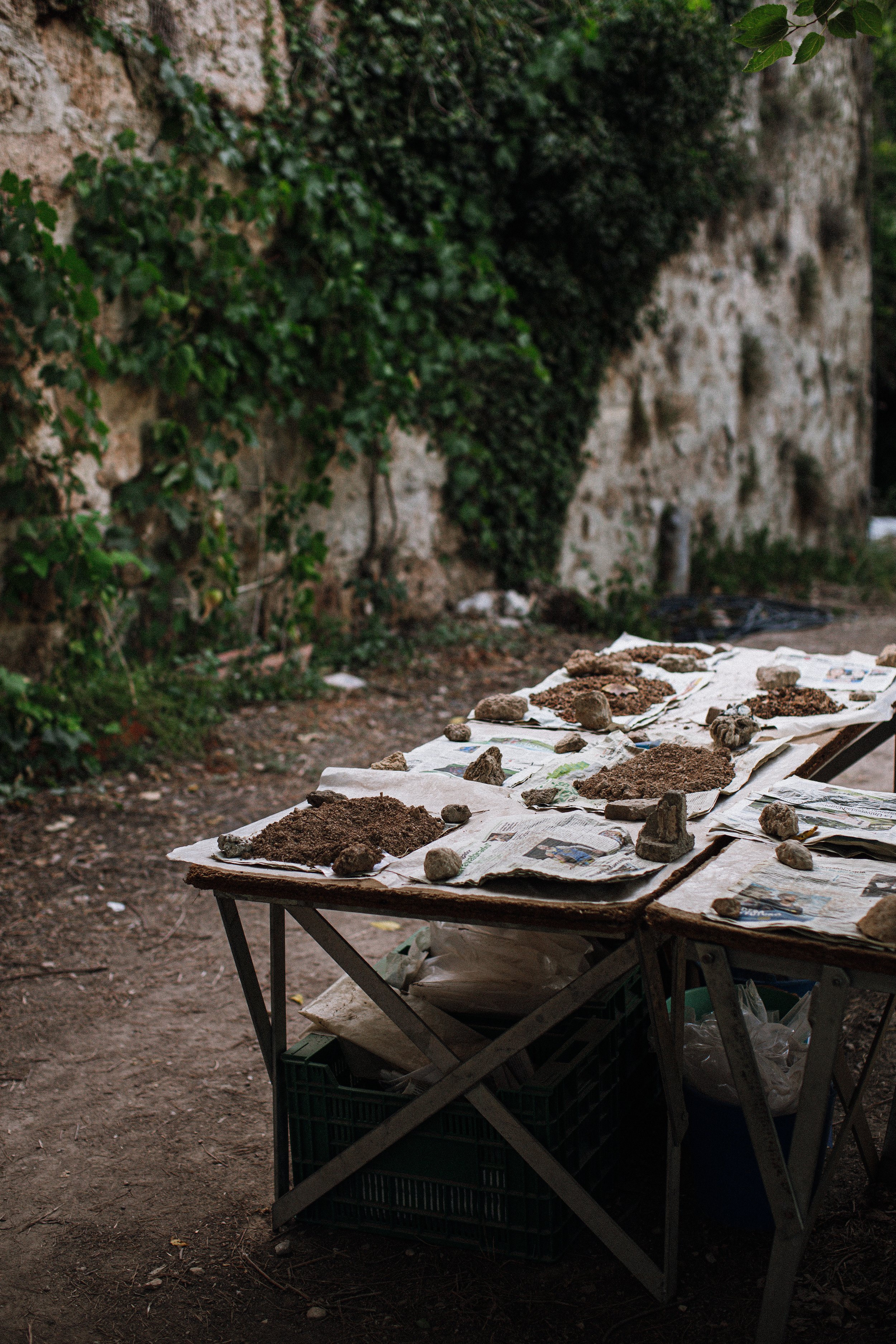
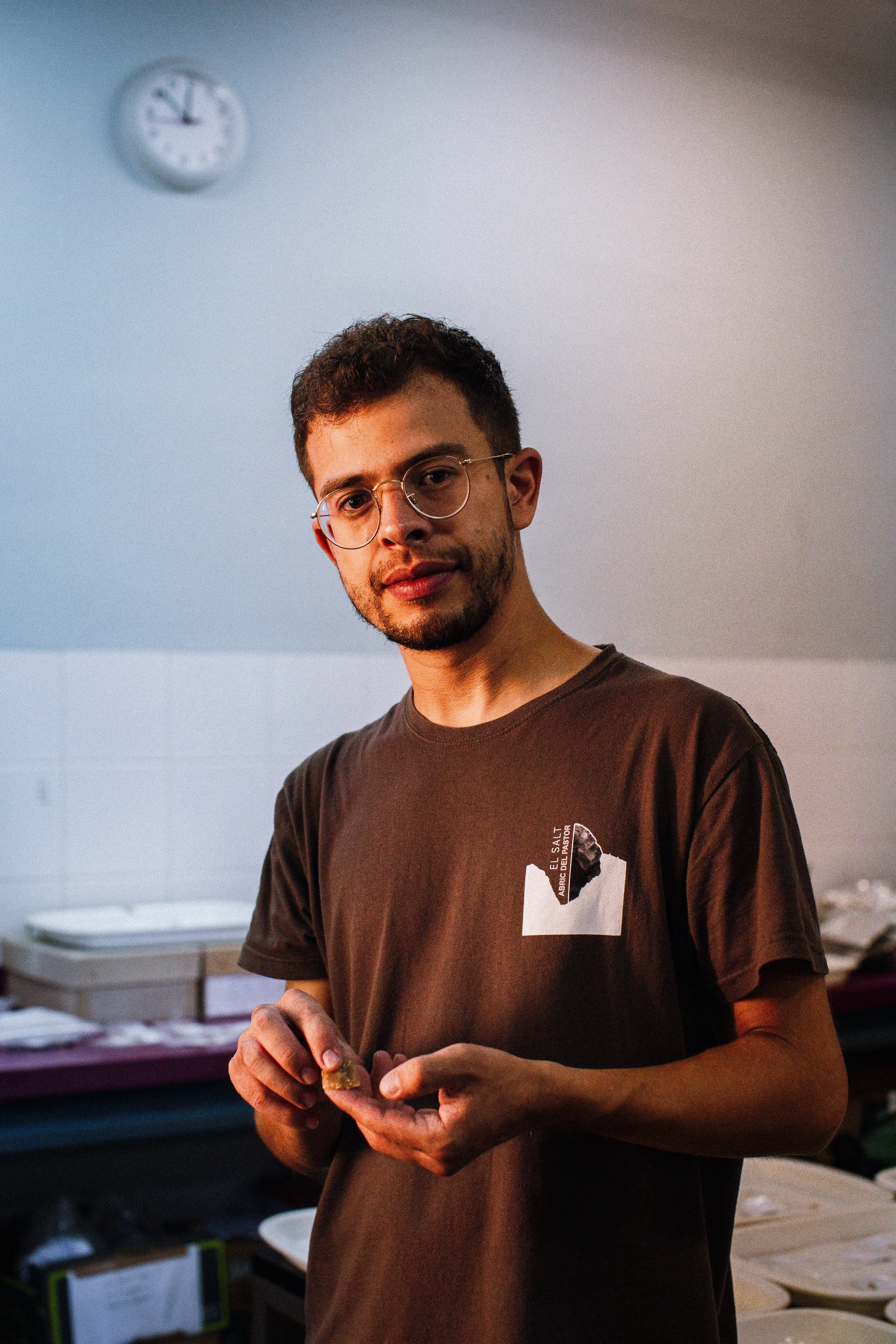
(below) Santiago Sossa, a PhD candidate at the University of La Laguna, examines an artifact in the laboratory near the El Salt excavation site. Sorting a group of recent discoveries, he is trying to reconstruct potential tools.

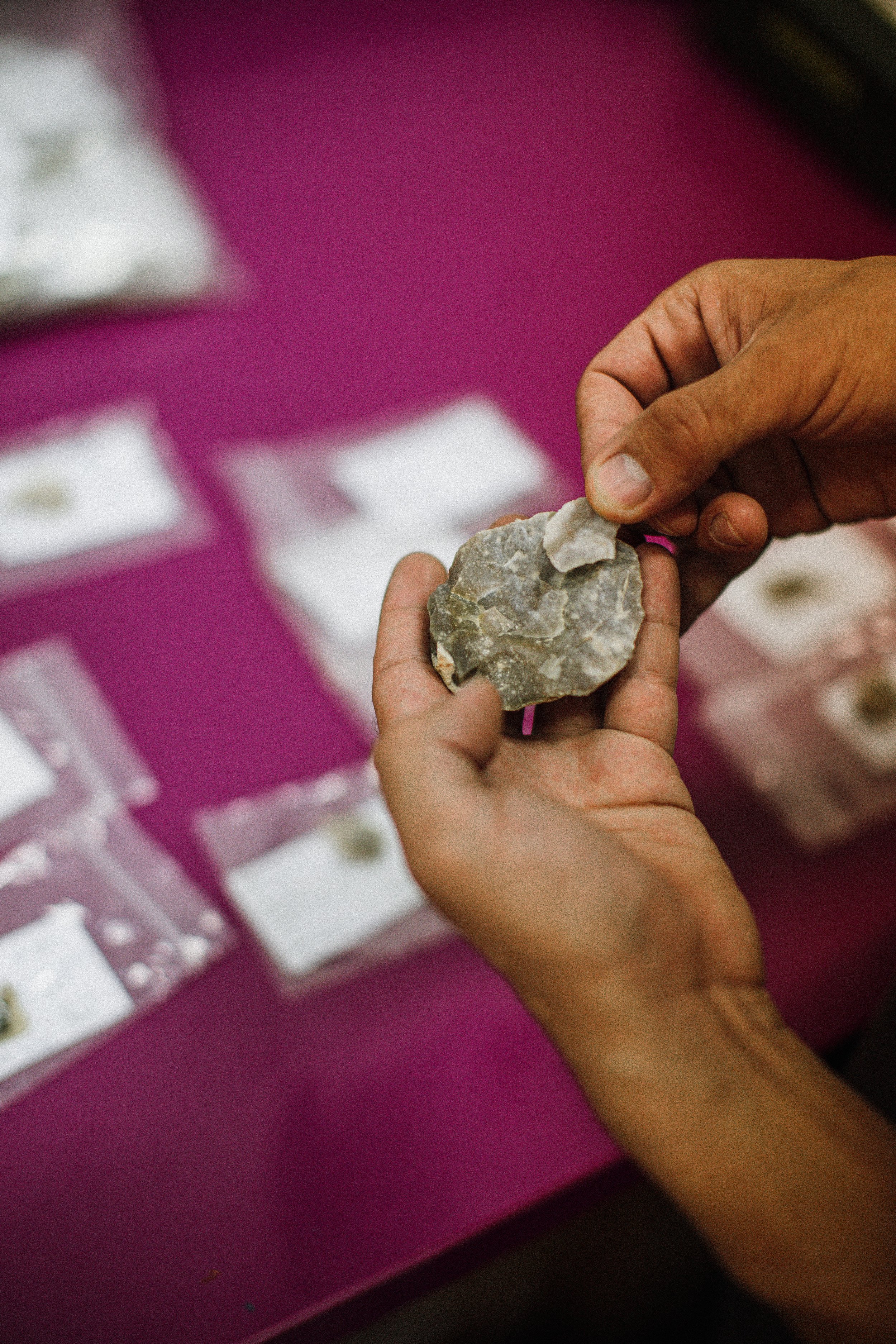

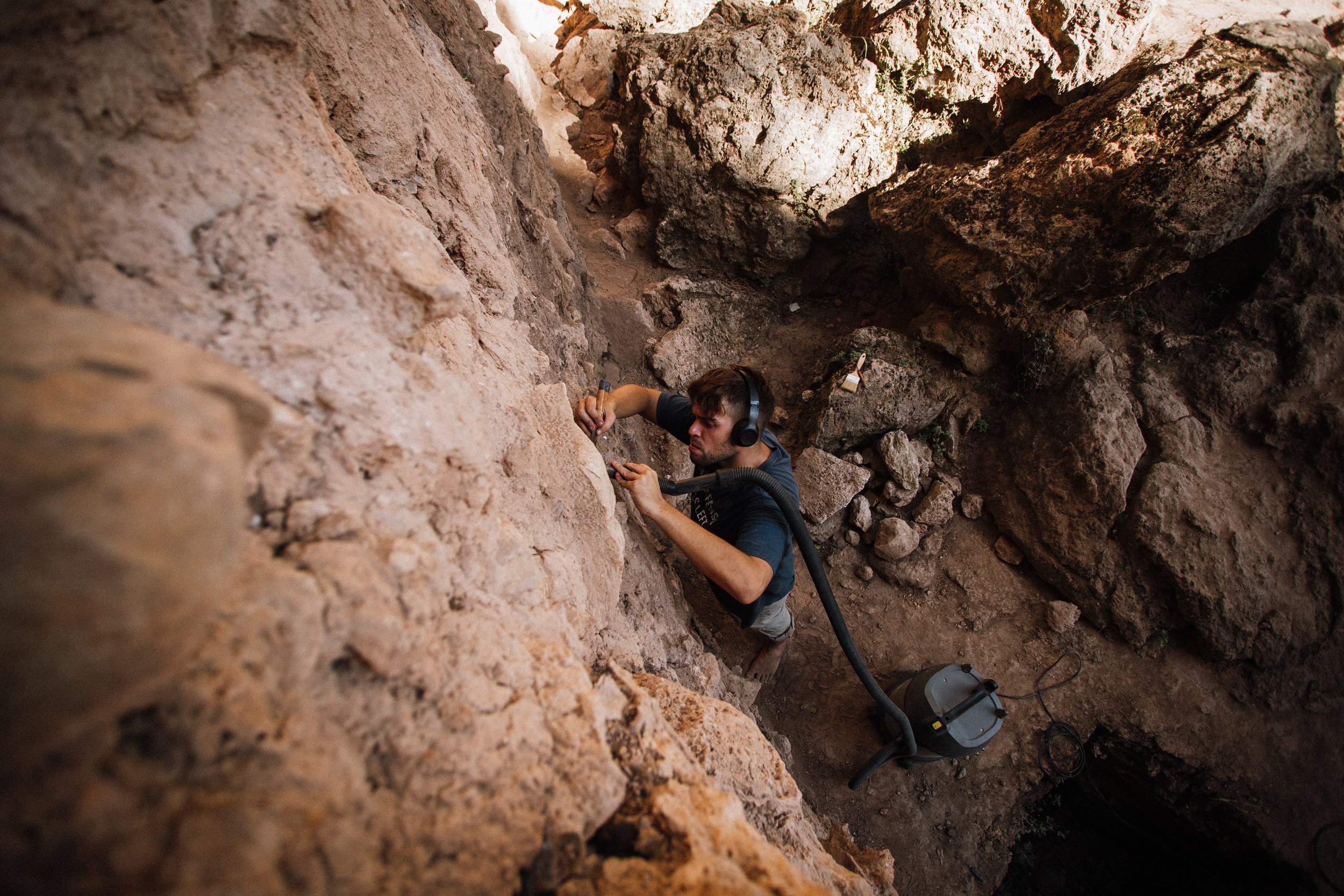
(above) Ada Dinçkal, a PhD candidate at the University of La Laguna, undertakes a restoration of the major El Salt stratigraphic profile which has undergone erosional damage over the decades it has been exposed. There is at least 40,000 years of stratigraphy represented across the face of the wall.
According to Ada, here’s why the wall’s profile is so important:
“An archaeological profile reveals the various layers, or "strata,” of deposition that have accumulated over time. These strata provide the context in which archaeological materials are found.
Often, these layers are created or influenced by human activity, making them artifacts in their own right. Therefore, analyzing them is crucial for understanding human activity across both space and time.
The expansive profile at El Salt represents the cumulative human activities spanning tens of thousands of years, each layer potentially signifying hundreds to thousands of years. Due to the profile's considerable lateral size, it also illustrates how human activity varied across different areas of the site.
When stratigraphy, or cumulative sequential layers of strata, is buried, it is shielded by the natural processes of geology. However, once exposed, even if protected, these strata are susceptible to gravity and environmental factors, leading to natural degradation.
The significant profile at El Salt is scheduled to undergo extensive restoration and conservation efforts in the near future. This preliminary work is intended to both document data from parts of the profile at risk of imminent damage as well as kickstart the broader conservation project.”
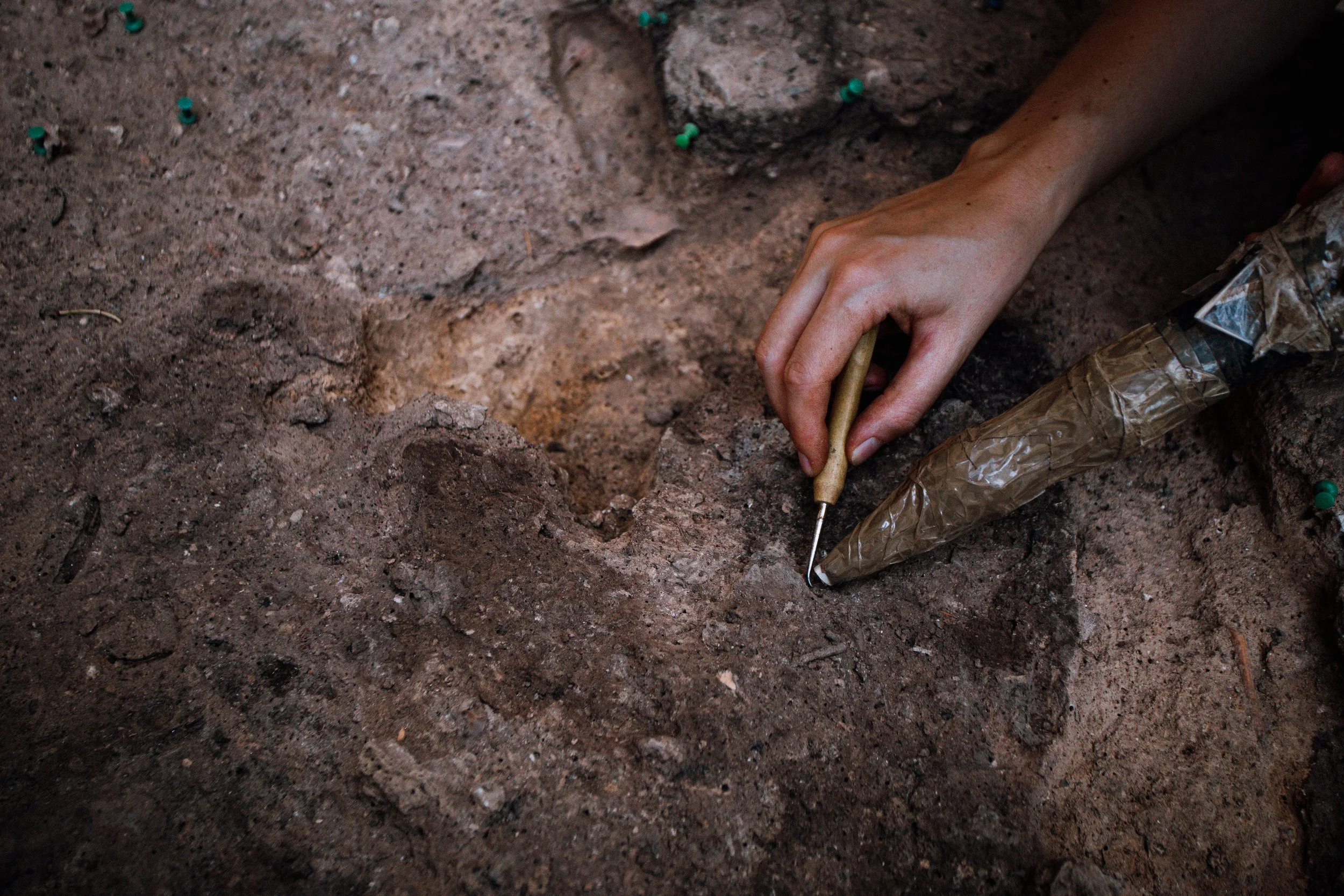
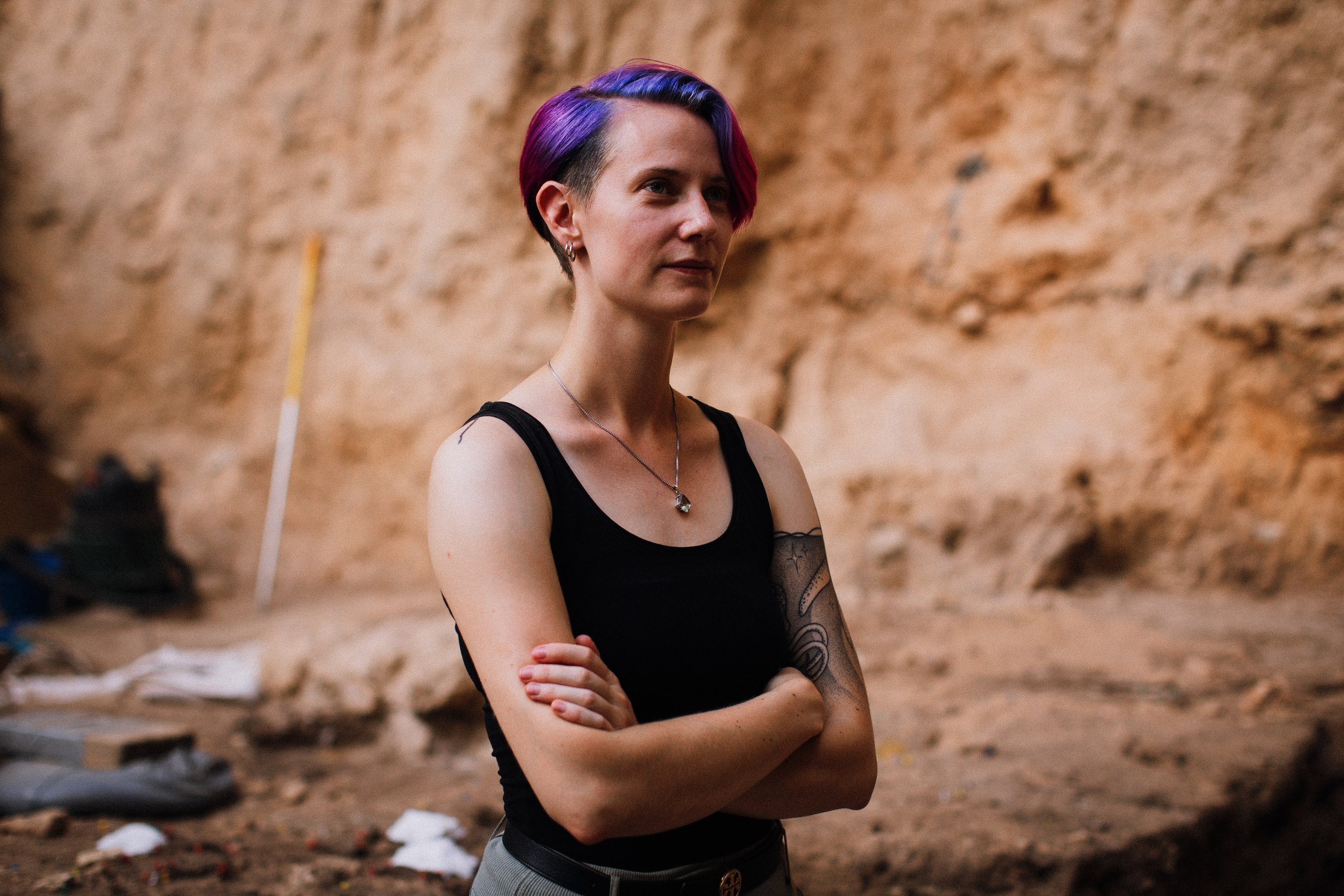
Dr. Sarah Pederzani is an excavator and palaeoclimate specialist. She’s also trying to understand the ways in which the complicated combustion area came to be the way it is.
“At El Salt, I have been excavating a very complex area of superimposed hearths to disentangle events and occupations from each other. In this work I am drawing on fifteen years of experience excavating challenging contexts, including micro-contextual excavation techniques.
At the same time, I am an advisor in the project for climate reconstruction and to guide future stable isotope analyses of the animal remains. Developing further work in this area will help us to better understand past environments and the movement of animals across the Pleistocene landscapes around El Salt.”

Ángela Herrejon is a postdoctoral researcher at the University of Burgos and the Complutense University of Madrid. She’s an archaeomagnetist and is investigating the timeline of the Neanderthal occupation levels.
“I study the record of the Earth's magnetic field in burned archaeological materials, and through the study of the fires that appear in El Salt, apply it to the temporalization of Neanderthal occupations.
The blocks that we prepare with plaster are used to infer the direction of the Earth’s magnetic field when the hearth was burned for the last time.
[This can] help us analyse the time that could have passed between the burning of different fires.”

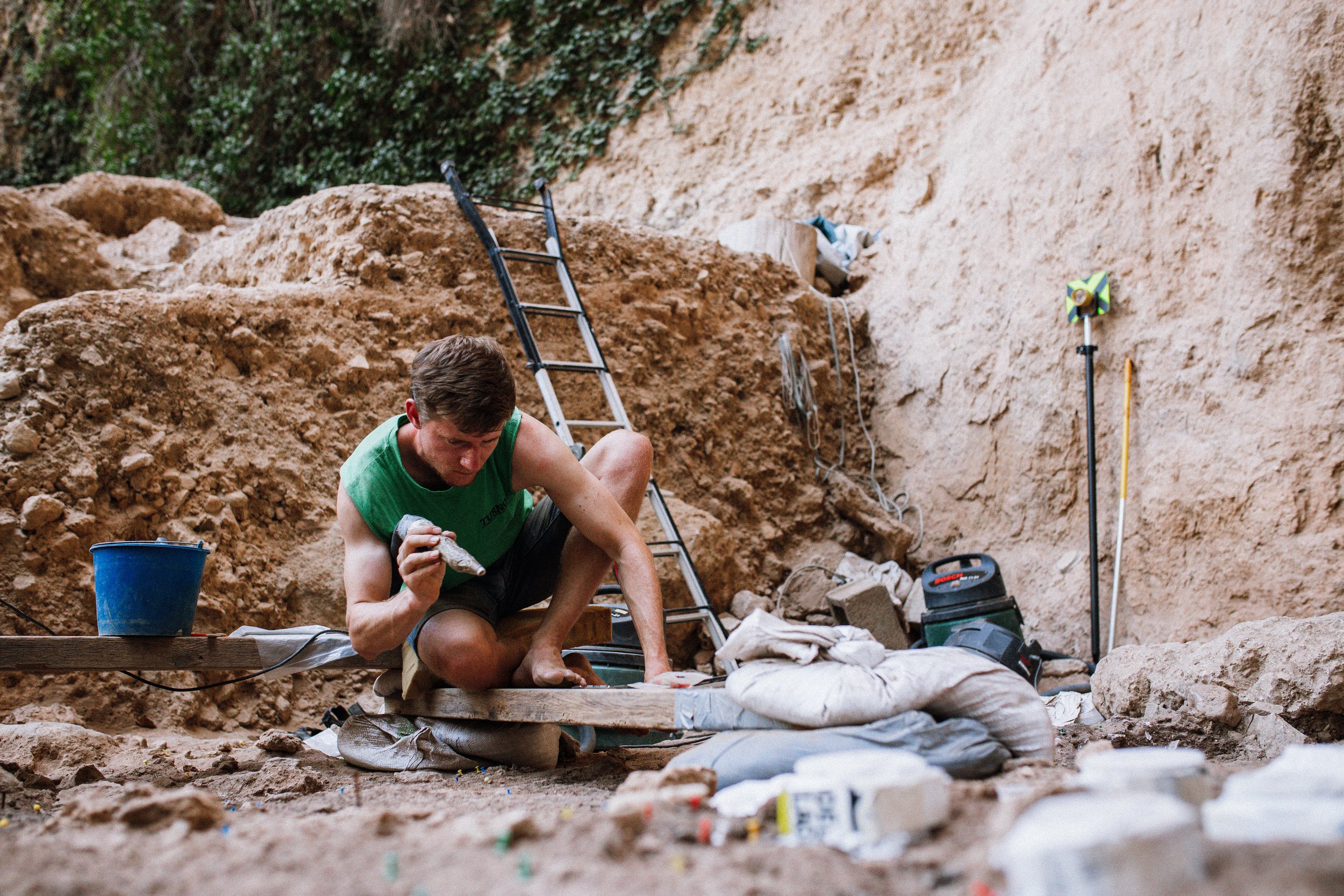
(above) Sven Kleinhapl, an excavator and student of physics, removes sediment using a vacuum, one of the unique aspects of the excavation at El Salt.
For Sven, excavating at El Salt is a family tradition. His grandmother, a paleontologist, studied the Neanderthal teeth found in previous excavation seasons. When Sven was only a boy, his grandparents asked him to accompany them to the excavations, kickstarting an interest in archaeology that would eventually lead him to apply his love for physics to the ongoing archaeomagnetic investigation of the entangled hearths, mentioned above.

(left) During the field season, many of the participating archaeologists and specialists live in a villa near the excavation site.
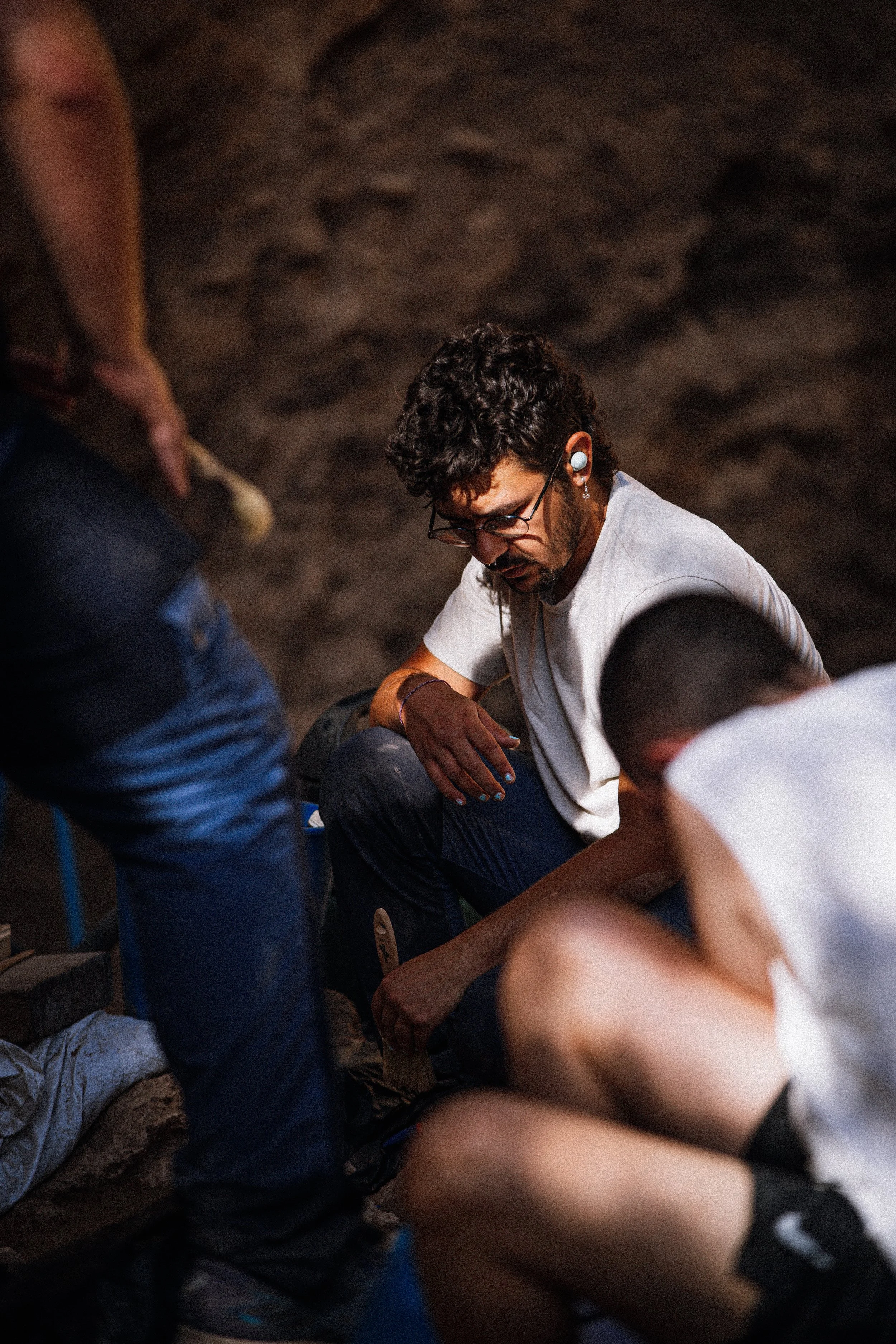
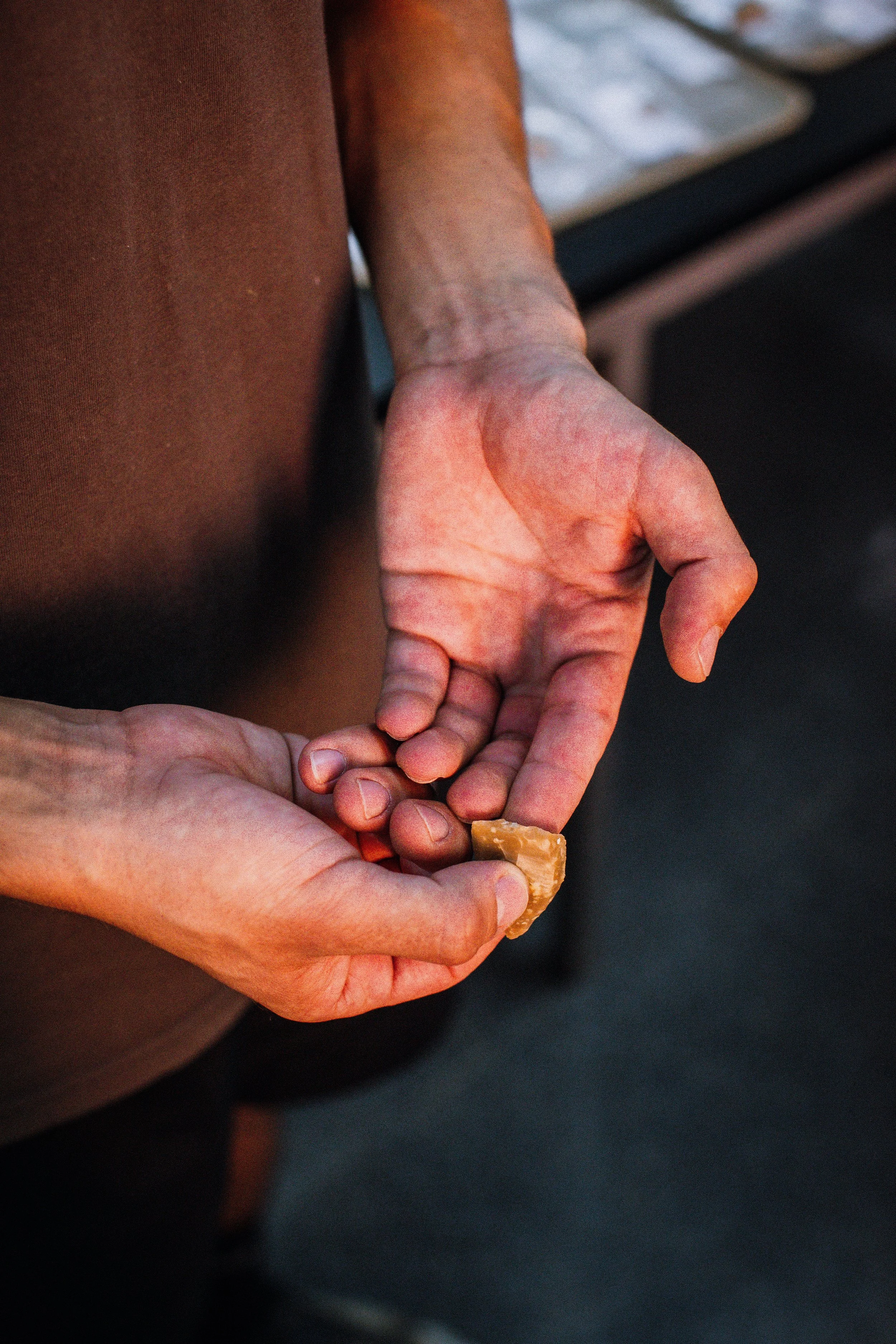
“We’re walking among the ghosts of Neanderthals,”

If you’re interested in learning more about the excavations at El Salt, there are plenty of great resources online. A good place to start would be googling the keywords El Salt, Alcoi, excavations, and Neanderthals.

